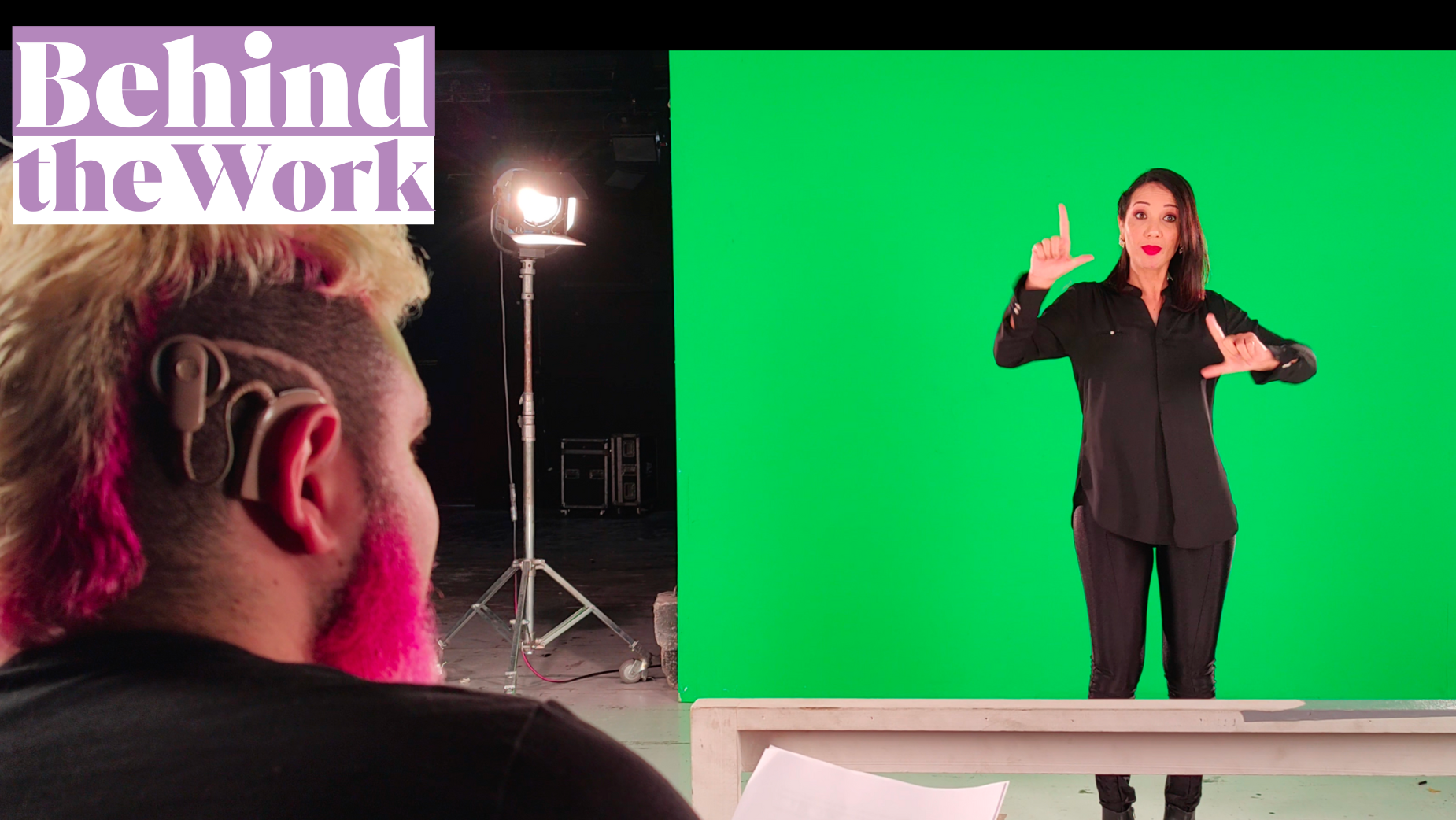
How These Hidden TV Messages Help Deaf Victims Report Domestic Abuse

Every hour in Brazil, a person with a disability reports a case of domestic violence. This is the insight that the Fala Mulher Association, a women’s rights NGO working to combat domestic violence, presented to its long-time creative agency partner, We.
Following this, We created the ‘Voice of Silence’ campaign to specifically help protect deaf and hearing-impaired victims of domestic violence. This project is a partnership with Brazilian TV broadcaster SBT that ‘hacks’ the age rating warning that displays at the start of each show via an on-screen Brazilian Sign Language (LIBRAS) interpreter.
While the text appears as normal, the interpreter’s ‘hidden’ messages, which air nationwide on 14 programmes per day, seven days a week, say things like, ‘Hey, you... yeah, you... watching me. You are no longer alone in case of violence: report it now in sign language (LIBRAS) at falamulher.ong.br’.
Speaking to LBB’s Ben Conway, We’s creative vice president Armando Araújo and associate creative director Otávio Mastrogiuseppe share that after finding a media partner in SBT, the broadcaster offered to produce the idea itself, and helped launch the full campaign which includes TVC, digital media, social activations, OOH and more.
They explain that in Brazil, TV has 88% coverage and almost 100% penetration, so SBT’s programming reaches almost the entire population, including hearing-impaired and deaf women who suffer domestic violence. These victims in particular have specific needs, which is why We chose to utilise the age warnings to directly communicate with them.
“The ‘Voice of Silence’ is not an outreach idea, it’s more of a direct marketing idea that happens on television,” say Armando and Otávio. “With this, we were able to take the hearing-impaired and deaf victims of domestic violence to an exclusive reporting channel. This is the reason why the idea is so effective and impactful.”
The creatives share that the trickiest part of the project was convincing people that it was viable in the first place. Not only did they have to re-record 30 versions of the different age-rating warnings so that they could be shown for all content at any time of day, but they also had to ensure that there were no legal implications of changing - and essentially advertising in - a legally required warning.

“From the TV broadcaster point of view, we also had to convince the crew that this idea would not be a problem when it comes to the audience experience,” say Armando and Otávio, “even though we were extending an important part of the introduction of the show - the age rating warning.”
“To overcome those challenges, we moved on and kept working. The ‘Voice Of Silence’ project didn’t happen overnight. It took more than a year of negotiations between the companies, people and brands involved for them to feel comfortable with everything.”
But what if an abuser saw the hidden messages too - would that pose an additional risk? Armando and Otávio explain that this was not a worry.

“We didn't have any concerns because the majority of SBT's audience is made up of women. Besides, the aggressors of the victims are not necessarily disabled, so the chances of them not understanding [the hidden messages] are much greater.”
They continue, “Even if one of the aggressors understood the message, this type of violence is a silent one, meaning no one would want to share this information (that they’re an aggressor) because people don’t want to be busted. Therefore, there would be no repercussions anywhere, since this is a veiled problem of our society.”
To help ensure the campaign was useful, safe and realistic for deaf and hearing-impaired people to use, the creatives say that their creative process involved, in a large part, professionals who are hearing-impaired and disabled themselves. This included the interpreter and the director of the LIBRAS content.
“The best proof we have of its effectiveness is that there was a 400% increase in reports during the campaign period,” they add.
However, this success isn’t where this campaign ends. While the ‘Voice of Silence’ project is focused on hearing-impaired and deaf women, it's also part of a bigger campaign from the Fala Mulher Association that involves all kinds of victims - with or without disabilities - helping them to report cases of domestic violence.
And meanwhile, the ‘Voice of Silence’ is only getting louder.
“Right now we're working on an idea in partnership with TikTok,” say Armando and Otávio, “and on top of that, we made the age rate warning available to other channels for them to join the cause. We are always looking for new ways to continue the campaign and soon the Brazilian Public Security Forum and IPEA will release its annual ‘Atlas of Violence’ research, so we will be alert to more ideas to fight against this problem.”















